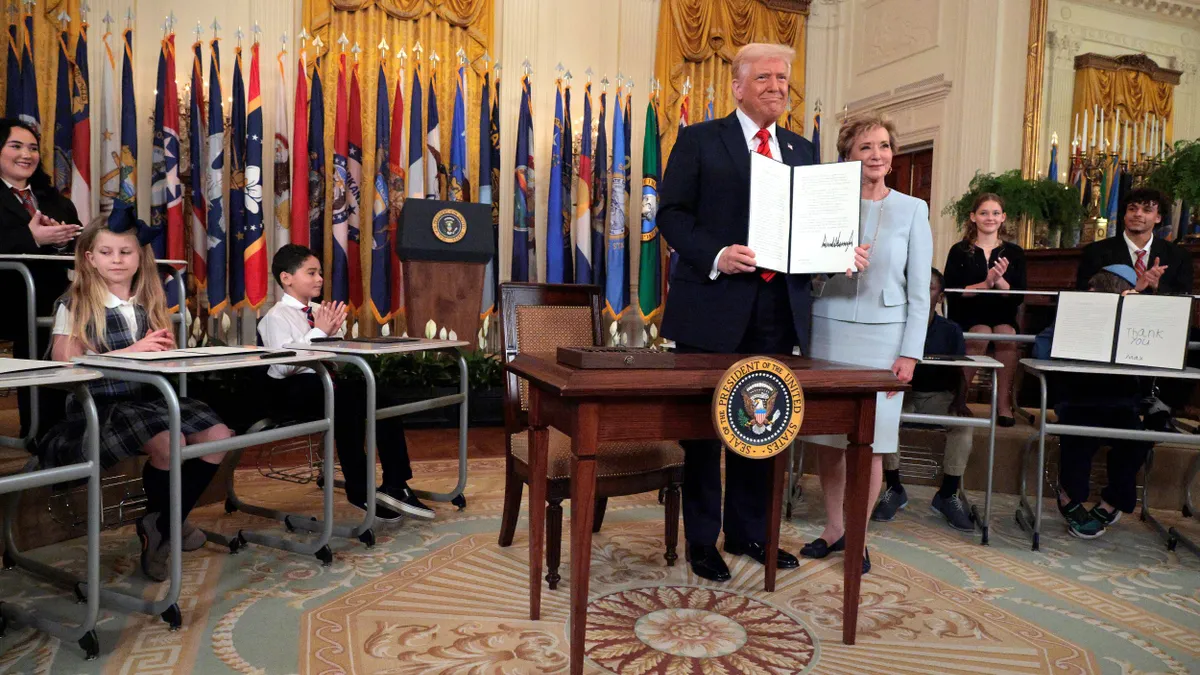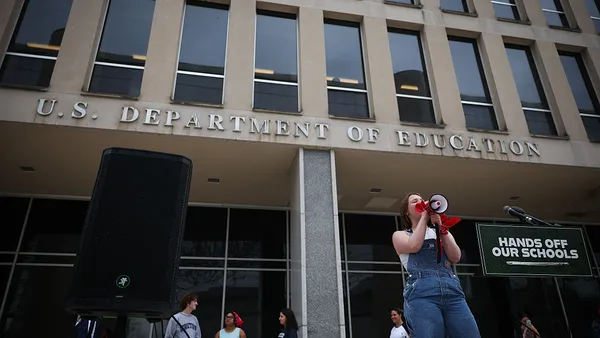Dive Brief:
- Recent cuts at the U.S. Department of Education and other federal actions like the withholding of federal payments are creating risks for traditional K-12 schools districts, according to a sector analysis published by Moody's Ratings on April 4.
- Local district leaders are likely to face difficult budget decisions, as most states — some of which are already struggling to balance their coffers in 2025 — are unlikely to fill gaps in federal funding. Additionally, school choice expansion could add to existing pressure on public school enrollment and potentially reduce state funding in some places.
- Traditional districts will have "a limited menu of options to respond to pressure," such as tapping into reserves, cutting expenses or going to voters with requests. It's likely they will have to consider reducing services if there are funding cuts, the report said.
Dive Insight:
Schools already faced a negative forecast for 2025, according to Moody's, which provides economic analysis and risk assessment for businesses and public sector organizations.
According to the firm’s latest report on the K-12 sector, the slew of federal policy changes expected to trickle down to districts in the long and short-term include but are not limited to: cancellation of pandemic aid extensions, scaling back on education research, and federal support for school choice.
"Given the uncertainty generated by the recent flurry of activity by the Trump administration, federal aid exposure represents a source of credit risk for traditional districts and charter schools," the analysis found. In addition, an expansion of school choice may lead to "a domino of effects for traditional districts if there were an acceleration of enrollment losses."
However, dependence on federal funding varies across the nation, ranging from 7% to over 20% of total education funding by state. Some of the states that rely most on federal dollars include North Carolina, Alaska, Mississippi, Arkansas, Oklahoma, Kentucky, South Dakota, Montana and Arizona.
Those that depend on federal cashflow the least are primarily concentrated in the Northeast, including New Jersey, New York, New Hampshire, Massachusetts and Connecticut.
While the department has guaranteed continued funding for statutory programs like Title I and the Individuals with Disabilities Education Act — the two largest sources of federal aid for K-12 education — other factors may complicate that further.
For example, the department sent a letter to states last week requiring them to certify within 10 days that their districts are adhering to the administration's anti-DEI stance implemented under Title VI.
According to the Moody's report, districts may have to grapple with cuts to funding without any help from their states. Some states — such as Washington, Pennsylvania and Maryland — were facing projected state budget gaps prior to the slew of federal-level changes threatening funding.
"Even if states are able to maintain solid increases in aid to traditional districts and charter schools, it is increasingly unlikely that states would be in the position to backfill any loss of funding from other sources," the report found.
Some district leaders said as early as last month that they are already working with their state leaders to brace for budget shortfalls.
Education policy experts watching the federal changes have also warned that less staffing at the Education Department may lead to reduced oversight and increased waste at the state and district level, and that it could harm vulnerable students the most.














